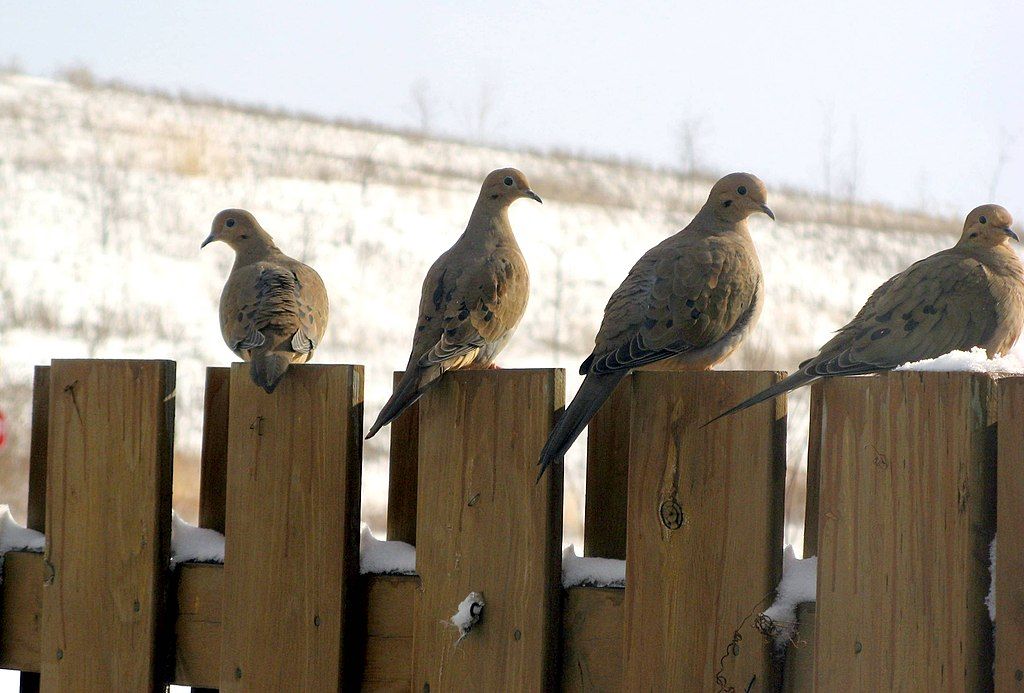
13 April 2022
In spring a change occurs in mourning dove behavior as large flocks we see in winter disperse to nest. Some flocks move north while locals break up into couples and fan out to choose a territory.
It is hard to notice when the change occurs so I graphed my eBird count of mourning doves (Zenaida macroura) in Frick and Schenley Parks, January 2021 through 9 April 2022.
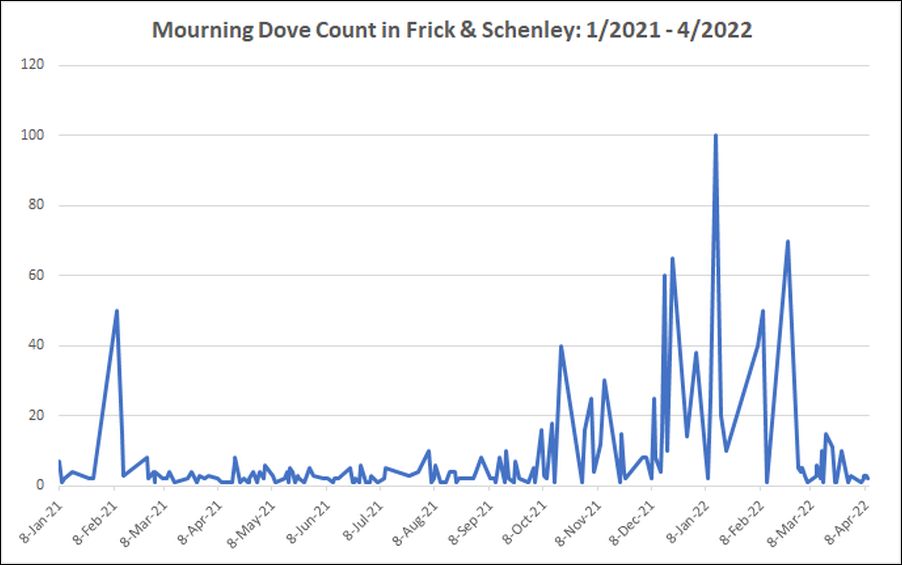
The change is pretty dramatic. Just 1-5 birds from March through September, then over 40 December through February. The largest flocks were at the Frick Environmental Education Center where they sunned in the trees above the feeders. 100 mourning doves in January!
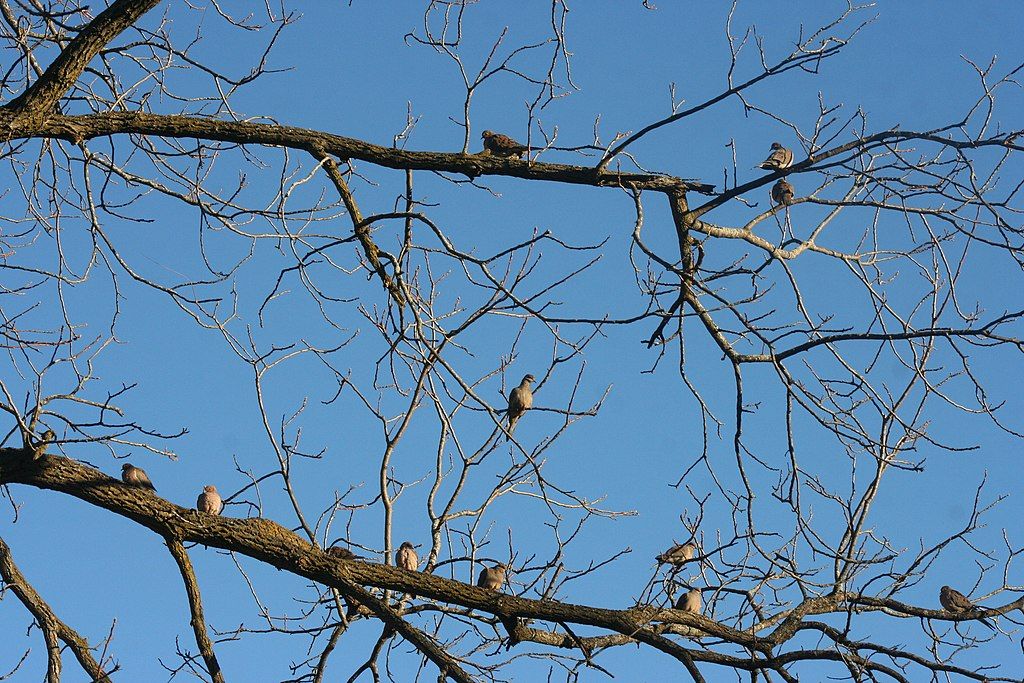
This year the count dropped below 10 in early March as they paired up. Some pairs maintain their bonds throughout the winter. Others get to know each other in the spring.
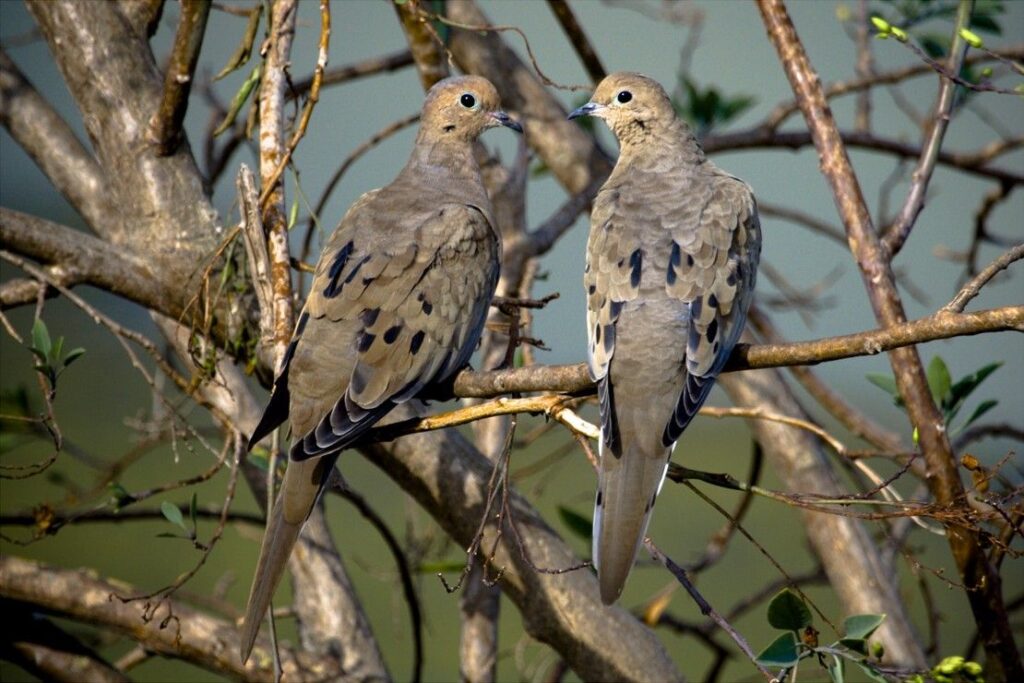
On territory the male visits potential nest sites and calls to his mate to inspect them. She gets to choose. (His nest call is 3 notes like this).
According to Birds of the World: To build the nest he brings small twigs, etc. which he delivers to her while standing on her back(!) She arranges them around her while using her body to form a simple bowl. Nest building usually takes 7–10 hours spread over 2–4 days.
The loosely built nest looks messy. Sometimes you can see through it from below.
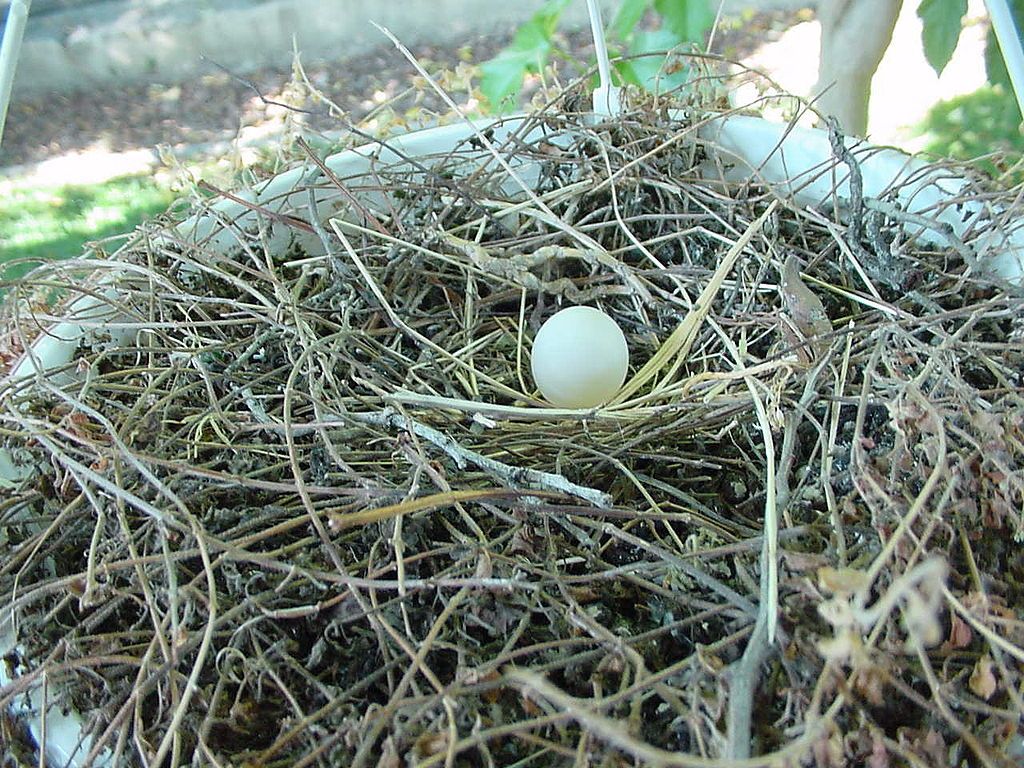
And they mate. She lays her first egg within 2 days of nest completion. Subsequent eggs are one or two days apart.
Mourning dove pairs share incubation as they wait for the eggs to hatch in 14 days. Surprisingly neither bird has a brood patch but it works anyway.
The chicks are fed by regurgitation and grow up to resemble their parents. They fledge in 13-15 days, sooner if frightened.
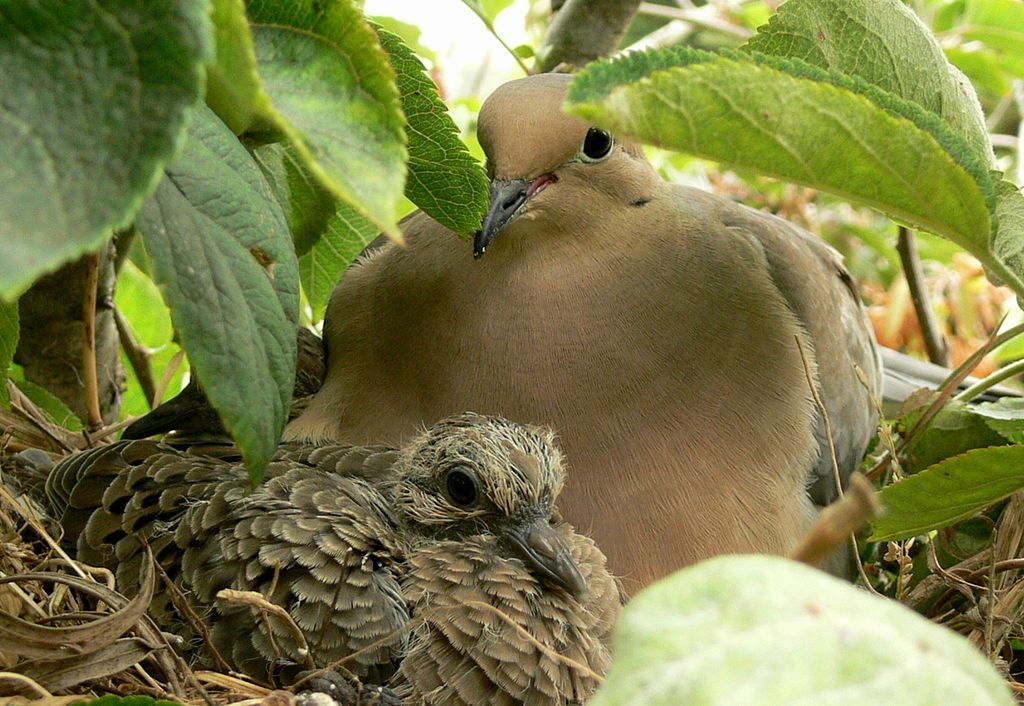
Juveniles remain in speckled plumage through August. By winter they look like adults.
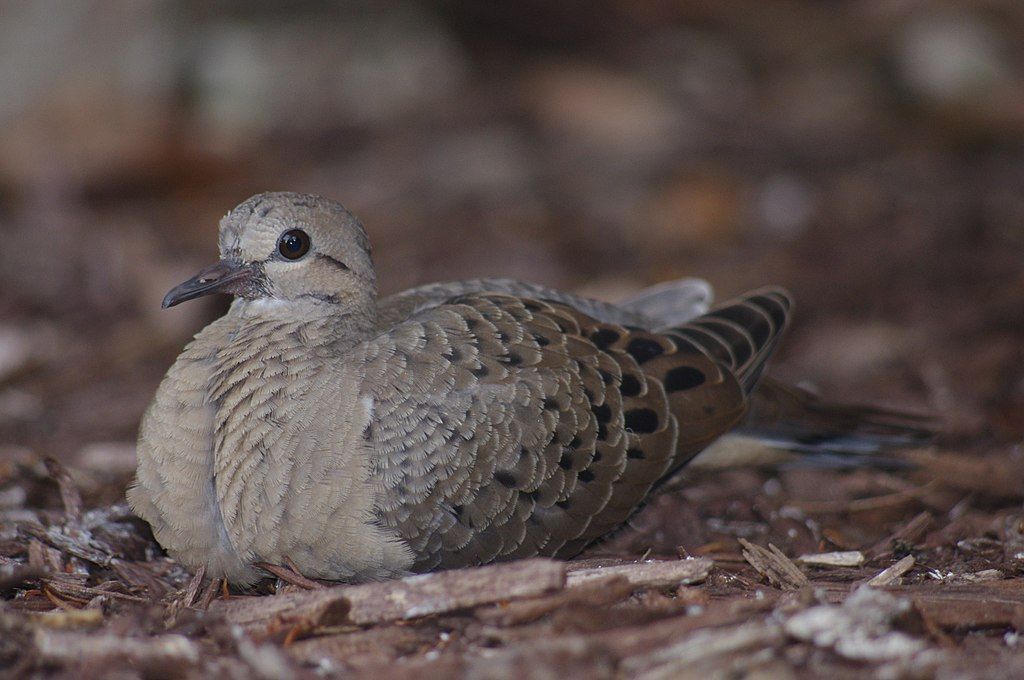
And in October mourning doves gather in flocks again. The process starts over from flocks to nests.
UPDATE 13 April 2022: Today at Frick Park I talked with someone who has a mourning dove nest in their yard while 16 mourning doves hung out near the feeders. Flocking and nesting were simultaneous today.
(photos from Wikimedia Commons; click on the captions to see the originals)


I have had a pair nesting on a platform i put high on my porch for years. they have had up to 5 clutches in a year. the first clutch for this year has already been raised and fledged. she is sitting on a new nest now. Haven’t seen any eggs yet but sometimes she doesn’t leave so you can see them. In warmer weather as I sit on my porch with my morning coffee and paper or later in the afternoon with a book it is neat to see their activity. very relaxing.